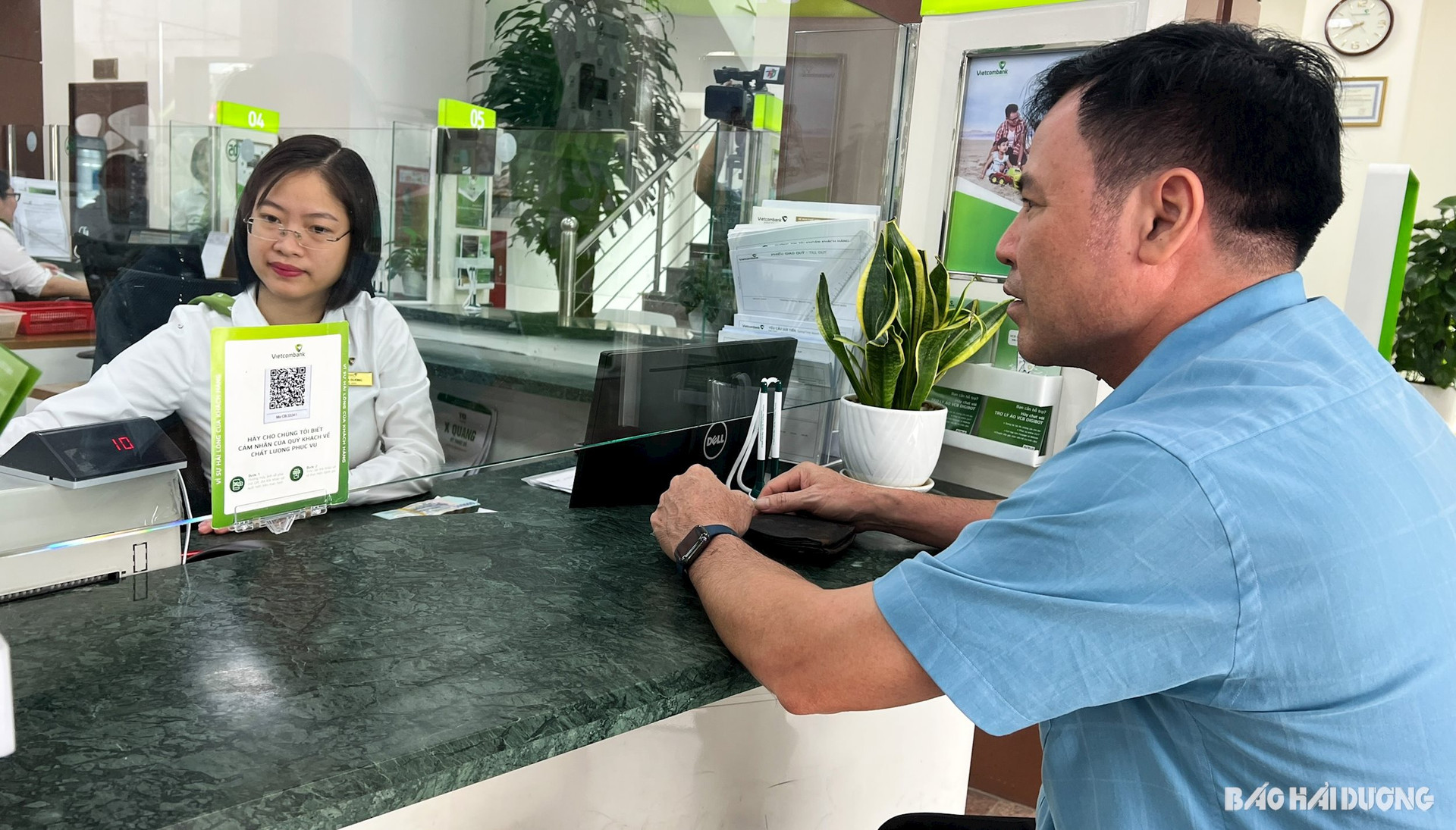Each increase in foreign exchange rate fluctuations will significantly affect the production plans of Hai Duong import-export enterprises, forcing enterprises to find long-term solutions.
.jpg)
Pressure to balance financial flows
Closely monitoring the USD exchange rate every day has become a habit of Mr. Tran Van Quang, Chief Accountant of Hai Duong Garment II Joint Stock Company (Hai Duong City). As a business with both export and import activities, each exchange rate fluctuation will have a significant impact on the business's development plan, especially in balancing revenue and expenditure.
This enterprise currently has a loan of 2.5 million USD at several banks in the province. When the exchange rate is at 24,000 VND/USD, this enterprise has to pay more than 300 million VND in interest to the bank each month. If the exchange rate fluctuates, the exchange rate will be at 24,500 VND/USD, and the interest payable will increase to tens of millions of VND each month.
“We have export activities so we will earn foreign currency, so in the long term, the increase in exchange rate basically does not affect the payment too much. However, the pressure is that we have to balance, even have a reserve fund to ensure payment to the bank when the foreign currency earned does not match the debt repayment schedule,” said Mr. Quang.
Daeho Steel Vietnam Co., Ltd. (in Dai An Industrial Park) specializes in producing cold-rolled steel for partners to use in cold-stamping bolts and screws to make components for motorbikes, cars, electronic equipment, and offices. The input materials are high-quality hot-rolled steel, imported mainly from major partners such as Posco (Korea), CSC (Taiwan), and some other brands from Germany... The import rate is up to nearly 80% of the total input materials, so the amount of USD that must be paid to partners is relatively large. Meanwhile, 80% of the total output consumed by this enterprise is in the domestic market. "The selling price for domestic partners is in Vietnamese currency, so it is always fixed. On the contrary, fluctuations in the exchange rate, even by just one dong, cause the cost of payment to partners supplying input materials to increase very high. Therefore, the more the exchange rate fluctuates, the greater our loss of revenue will be," said Ms. Phung Thi Thuy, Head of Import-Export Department of this company.
Long term solution
According to Ms. Thuy, to minimize the impact of foreign exchange rate fluctuations, import enterprises need to find ways to increase the localization rate of input materials. “Output products using domestic materials will only serve certain industries, making it difficult to meet the needs of partners. In addition to Indonesia and Malaysia, we are actively accelerating the process of obtaining BIS certification to supply products to the Indian market. Expanding export markets in the long term will be a solution to reduce the impact of exchange rates,” Ms. Thuy added.
Sharing the same view, Mr. Luong Cao Bang, Chief Accountant of Sumidenso Vietnam Co., Ltd. (Dai An Industrial Park) said that import-export enterprises need to aim to balance the revenue and expenditure of each currency. 50% of this enterprise's materials are imported from Japan and some other ASEAN countries, mainly in USD. The remaining 50% of materials are imported from more than 350 domestic suppliers. However, up to 150 domestic enterprises also require payment in USD. The amount of payment to this group of 150 domestic suppliers alone is up to nearly 22 million USD per month. "We export more than 95% of total output, so the foreign currency revenue is basically guaranteed for payment purposes. However, at some points we still have to buy USD to pay partners before receiving foreign currency. Therefore, exchange rate fluctuations will of course have a certain impact if businesses in general do not have a risk reserve fund," Mr. Bang said.

Building a reserve fund for exchange rate risks, balancing the income and expenditure of each currency, including foreign currency in each payment, and promoting export activities as mentioned above are the methods applied by many businesses. In addition, many businesses seek out third-party suppliers specializing in importing large quantities of input materials from abroad to take advantage of price advantages. However, these are not things that can be done overnight but require long-term planning.
A solution that is considered to be highly effective for businesses in dealing with exchange rate fluctuations is to take advantage of financial derivative products from banks. According to Mr. Pham Van Thai, Head of FDI Customer Department of BIDV Hai Duong, a forward foreign currency purchase contract will help businesses determine the cost of converting foreign currency into Vietnamese Dong. “Basically, it can be understood that when a business signs a forward foreign currency purchase contract with a bank, the exchange rate of the foreign currency to be paid in the future will be determined at the time of signing. Thus, businesses can manage foreign currency costs more effectively,” said Mr. Thai.
On the macro level, the recent strong fluctuations in the VND/USD exchange rate are not temporary but are creating an upward trend. However, whether this trend will last or not depends on many factors. In addition to the State Bank's efforts to manage the exchange rate, businesses need to proactively seek practical solutions, in which discussing with the service provider bank will be an effective reference.
HA KIEN